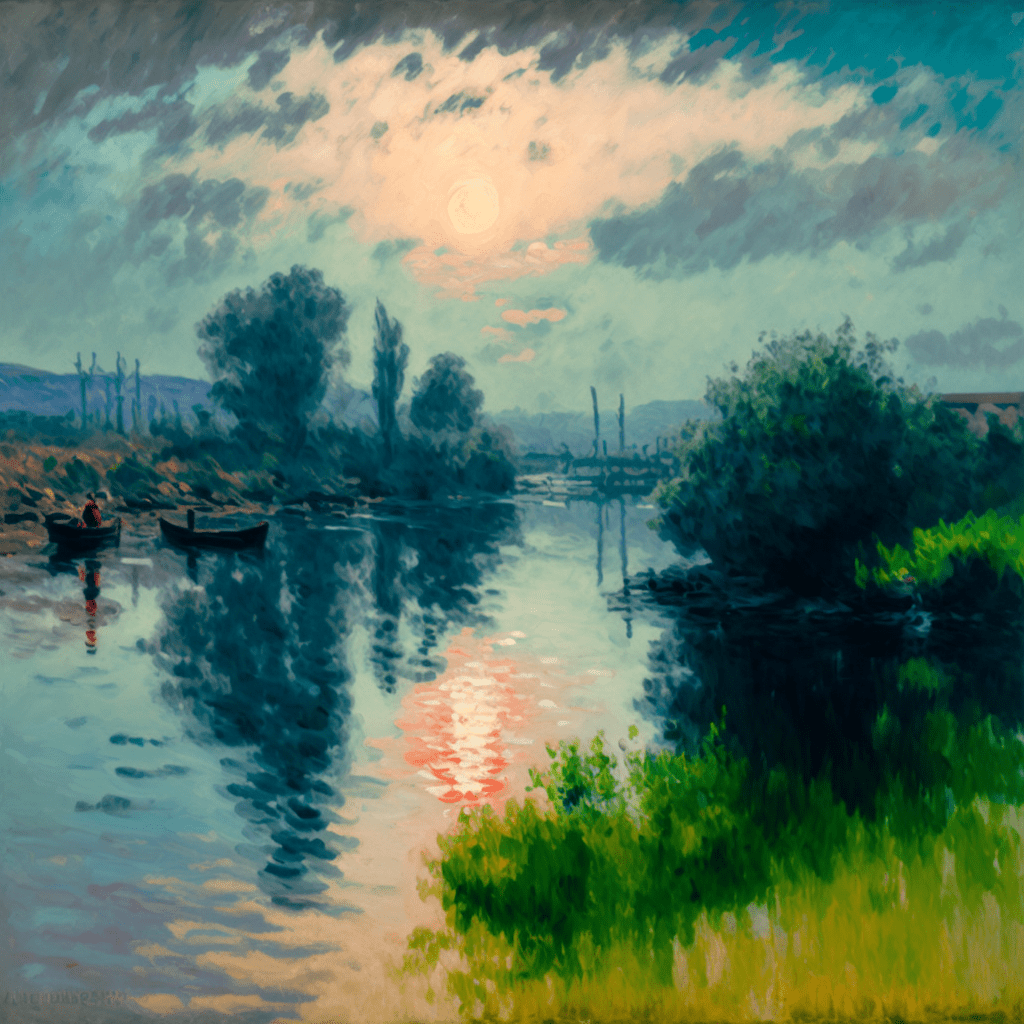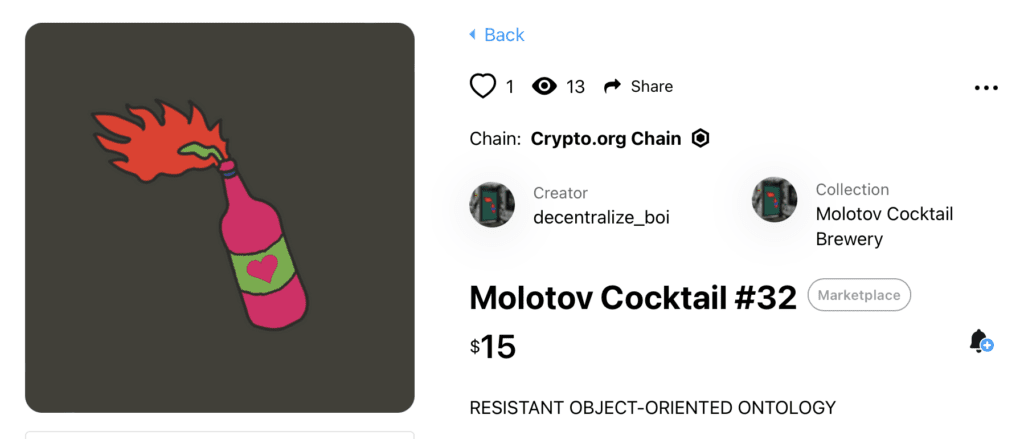Investors in NFTs, those little pieces of web clipart somehow attached to the blockchain which have been the subject of immense hype in the past couple of years, have begun suing their celebrity promoters.[1]Richard Whiddington, ‘NFT Buyers Are Suing Justin Bieber, Madonna, and Bored Ape Yacht Club’s Founders Over an Alleged “Scheme” to Bilk Investors’, Artnet News, 12 December 2022, … see more Founders of the Bored Ape Yacht Club, one of the NFT craze’s cornerstone movements which sold algorithmically-generated cartoon images of.. bored apes, have been accused of misleading collectors by not disclosing their financial relationships with the likes of Justin Bieber and Jimmy Fallon who publicly endorsed the Club’s produce.
This would have been news but the already winterised crypto world, whose technologies and ideologies underpin the NFT trade, is having a moment while one of its gurus Sam Bankman-Fried faces financial misconduct charges. And that’s too bad because the narratives of malpractice which will likely become the crypto legacy will paint NFT aficionados as either one-dimensional victims or unscrupulous fraudsters and the art as a tax write-off at best.[2]Edward Helmore, ‘Investors Convert “Totally Worthless” NFTs into Tax Write-Offs’, The Guardian, 29 December 2022, https://www.theguardian.com/technology/2022/dec/29/unsellable-worthless-nfts-tax-write-off
Many thousands of art speculators willingly paid to create these NFT ‘aesthetic assets’ and thousands more to ‘own’ them. Even though crypto and NFTs have existed for years, the surge in the token craze coincided with pandemic lockdowns, suggesting that gambling on gifs and jpegs was a welcome distraction. But NFTs were more than the illusion of financial reward: they offered punters the chance to speculate in aesthetics. If, as multiple Instagram posts – and, ironically, art institutions’ fundraising campaigns – suggested, it was books, songs, films, and paintings that made lockdown life bearable, NFTs deserve a proud place on the same list.
Unlike the quotidian Ponzi schemes which exploit the vulnerable and the stupid, the NFT bubble has been characterised by an unprecedented level of open-source speculative transparency. Surely, the players must have heard of Beanie Babies, the 2008 US housing bubble, or the Dutch Tulip mania of the 17th century. They must have known that all bubbles always ended the same way: in the punters’ financial ruin. In the NFT story, all the elements of the enterprise were openly scripted in advance. Op-eds debunked the hype, fraud, and inevitable criminal charges. John Oliver probably run an anti-NFT segment on Last Week Tonight. As per Jean Baudrillard’s now well-tested predictions, even clickbait sob stories featuring devastated ‘artist-investors’ who threw their 401(k)’s worth into now-defunct trading and collecting platforms were all but foreshadowed.
And yet, neither deception nor mass psychosis explains how the NFT community came to identify with the intrinsic value of art. That so many went all-out on NFTs despite knowing that they would lose reveals an acute speculative deficit that haunts 21st-century life. So many avenues of exploration and speculation have been foreclosed to the armies of otherwise non-playing characters that NFTs became the de-facto outlets of last resort[3]Before autumn 2022, trading in NFTs intensified whenever the main crypo markets faltered. Curating (and) NFTs: Lecture by Maja Ćirić (Skopje: Museum of Contemporary Art Skopje, 2022), https://www.youtube.com/watch?v=Edzz72rgxo0 where Bored Apes, unattractive as they are, became an attractive idea. And this insight is crucial: if NFT punters did not expect to make a quick buck by way of Robinhood and Reddit and nonetheless persisted in offering their clipart wares on the blockchain altar suggests that the speculative deficit is not merely financial, but aesthetic.
In his intellectual history of speculation, Gayle Rogers observes that the phenomenon has always been part of aesthetic production: an artist must let the imagination wander. In the 19th century, however, the unprecedented rise in commodity speculation turned artistic movements themselves into new kinds of speculative objects.[4]G Rogers, Speculation: A Cultural History from Aristotle to AI (Columbia University Press, 2021), 136 This is more than just the question of ‘art as investment’ which has been the tedious feature of art criticism already in the 1910s or the influence of the speculative American trade in French Impressionism on the artistic production itself.[5]Jesse Matz, Lasting Impressions: The Legacies of Impressionism in Contemporary Culture, Literature Now (New York: Columbia University Press, 2016) The significance of the explosion of commodity art lies in recoding of speculation as contingent on aesthetics where it was previously art that relied on access to speculative cognitive and material resources. Modernism may have been the result of speculation, but now forms of social and financial speculation were the children of Modernism.

This bears repeating: speculation relies on the production of aesthetic forms. This condition intuitively makes sense because art history has us believe that artists change the world with aesthetic ideas, even if it’s most often capital that eats up human ‘on spec’ creativity. But the depth of the speculative deficit becomes apparent only when we look past art world logic which is all but aesthetically rigged. What we are told is art does not begin to address the speculative deficit in the world after the end of history. The sheer mediocrity of sensory experience offered by a Bored Ape which nonetheless become an attractive counterproposal is the conclusive indictment of the mainstream art world’s speculative poverty.
As though it knew this, the monopolitical art world establishment largely shunned NFTs, showing disdain for its aesthetics that didn’t fit tested infrastructures and the less said about Art Basel’s collaboration with Tezos, the better.[6]Georgina Adam, ‘Death in Miami: Crypto Winter Imperils NFTs and the “effective Altruism” Movement Too’, The Art Newspaper, 9 December 2022, … see more NFTs simply weren’t ‘art’ enough yet to be taken seriously by those critics who thought of them in historical terms. Others, including this writer,[7]Pierre d’Alancaisez, ‘Pyramid Scheme Meets Bubble’, 9 March 2021, https://petitpoi.net/pyramid-scheme-meets-bubble/ foresaw the pyramid scheme’s inevitable collapse but lacked the enthusiasm to investigate its potential for aesthetic innovation.
But another class of the art world NFTist tried their hand at the genre to save (or maybe destroy) it, perhaps out of fear that left unchecked, NFT aesthetics would deteriorate into fascism. This may seem laughable, but it is an art world dogma that any aesthetics not accompanied by declarations of political correctness must be evil[8]Pierre d’Alancaisez, ‘Benevolent Edgelords: Specters of Benjamin and Memetic Ambiguity’, in Critical Meme Reader II: Memetic Tacticality, ed. Chloë Arkenbout and Laurence Scherz (Amsterdam: Institute of Network Cultures, 2022), 32–51, … see more and WAGMI is just too close to MAGA. And so, Bored Apes were the subject of an impossible-to-follow ideological witch hunt,[9]Ben Davis, ‘How Seriously Should We Take This Bored-Ape Conspiracy Theory? + More Questions About the Week’s Art News’, Artnet News, 11 January 2022, https://news.artnet.com/opinion/bored-ape-yacht-club-racist-ryder-ripps-2058402 while Milady Maker’s NFTs were unceremoniously linked to Nazism.[10]Mark Hunter, ‘Milady Maker NFTs Crash After Founder Nazi Links Exposed’, FullCrypto, 25 May 2022, https://fullycrypto.com/milady-maker-nfts-crash-after-founder-nazi-links-exposed
It is in this atmosphere that art world latecomers to the party, such as curator Nato Thompson who is known for his investment in the progressive and socially ameliorative effects of institutional art practice, appear to have completely misunderstood the speculative potential of NFT production. Thomson’s platform Artwrld which “engages broad audiences and explores the emerging possibilities of blockchain technology for creative practice”[11]‘About’, Artwrld, 2022, https://www.artwrld.com/about is not only a transparent attempt to cash in on an already-passing fad but also an overbearing, overdetermined instrument which results in the creation of politically flaccid, yet preachy works like Walid Raad’s ironic series of animated birthday cards for Robert Mugabe, Mao Zedong, and Victor Orbán.[12]Walid Raad, ‘Festival of Gratitude’, Artwrld, 2022, https://www.artwrld.com/projects/festival-of-gratitude Most of these NFTs have sold out, demonstrating that the art world happily backs ideas it understands.
But the proliferation of algorithmically generated animal cartoons that became the subjects of NFT collections shows that there is a deeply-felt need to break out of the aesthetic borders erected by mainstream cultural politics. The few art world insiders who, in retrospect, may have had looser designs for the medium appear to have changed their minds now that their financial speculation in NFTs has turned south. The artist-writer-curator and public curmudgeon Kenny Schachter who tried hard to establish NFTism as an art movement by selling CryptoMutts and drop-shipped merch[13]Kenny Schachter, NFTism, accessed 1 January 2023, https://www.nftism.com/ appears to have turned his back on the idea that NFTs were anything to do with art.[14]Kenny Schachter, ‘Happy Post NFTism’, Tweet, Twitter, 1 January 2023, https://twitter.com/kennyschac/status/1609362488788942850

Is this a sign of a fundamental aesthetic weakness of insider artists facing the speculative deficit that plagues the art world as much as it does the rest of life? Schacter’s irreverent and idiosyncratic output that refers to itself as ‘art without substance’[15]Kenny Schachter, Art without Substance, 2022, https://www.kennyschachter.art could have been a guide for other art world natives in diagnosing the speculative poverty of their practices. But even this avenue was foreclosed when Schachter’s co-conspirator, the art critic Jerry Saltz let it slip that it would be the financial trade that distinguished between the 99.99% of NFTs that were mere ‘Frankensteins’ and the 0.01% that counted as art.[16]Saltz Jerry, ‘@jerrysaltz To All Those Obsessing over NFTs Being Bad for Art & the Market: 99.99% of All NFT “Frankensteins” Ever Get off the Table.’, Tweet, Twitter, 22 February 2022, … see more For NFTs to be anything other than a ‘rebel without a cause’ is to give up on the problem they evolved to solve.
Such is the capitalist logic of professionalised practice of art: whenever it encounters an idea that it cannot encompass, it develops conceptual languages to understand it and, in so doing, constrain it. Perversely, the theorist Mark Fisher’s Frieze magazine report from the landmark 2009 conference on Speculative Realism opened by acknowledging the then-emergent philosophical movement’s good branding.[17]Mark Fisher, ‘Speculative Realism’, Frieze (blog), 12 May 2009, https://www.frieze.com/article/speculative-realism The proposal that realism, the view that certain statements can be made of objects regardless of whether anyone believes them or not, be brought together with speculation should have been music to aestheticians’ ears. But by the time speculative realism and its later incarnation as ‘object-oriented ontology’ spearheaded by the philosopher Graham Harman permeated the art world, the censoriousness of political do-gooders had crept in.
Historicising for the e-flux Journal Susanne Pfeffer’s 2013 exhibition Speculations on Anonymous Materials which overtly connected speculative realism with ‘post-internet’ art, critic Stefan Heidenrich refused to understand speculative aesthetics as anything other than a prop for the art world’s reputation laundering.[18]Stefan Heidenreich, ‘Freeportism as Style and Ideology: Post-Internet and Speculative Realism, Part II’, E-Flux Journal, May 2016, … see more This reading, typical of mainstream criticism, is a category error which led Heidenrich to bemoan the failure of early proponents of internet-derived art such as Oliver Laric or LuckyPDF to fundamentally reconfigure the art market (as though that was an artist’s highest calling) while barely concealing his envy for Simon Denny’s proximity to tech start-up culture.[19]Stefan Heidenreich, ‘Freeportism as Style and Ideology: Post-Internet and Speculative Realism, Part I’, E-Flux Journal, March 2016, … see more
Seeing that some of the fundamental concerns of speculative aesthetics finally came to the foreground in the practice of NFTs, this dismissal seems like a missed opportunity. Notes from a 2013 meeting of the fledgeling aesthetic faction of the speculative realism movement proposed that speculative aesthetics would “acknowledge the real force of images, experimentally employing techniques of modelling, formalisation, and presentation to simultaneously engineer new domains of experience and map them through a reconfigured aesthetics that is inseparable from its socio-technical conditions.”[20]Robin Mackay et al., Speculative Aesthetics, Redactions 4 (Falmouth: Urbanomic, 2014), https://www.urbanomic.com/book/speculative-aesthetics/ This object-orientedness, as Robin Mackay observed, offered art a much-needed opportunity to be considered on par with all other things. Expressed like this, however, speculative aesthetics registered to most art theorists like a demotion of art’s previously unchallenged status as aesthetic speculator-in-chief.[21]Mackay et al., chap. Introduction

It also didn’t help this turn to the things themselves that the art world was deeply uneasy about the uncontrollable nature of technological progress whose accelerationist tendencies were the subject of keen speculation at the same time, also on the pages of the e-flux Journal.[22]Gean Moreno, ‘Editorial: Accelerationist Aesthetics’, E-Flux Journal, no. 46 (June 2013), https://www.e-flux.com/journal/46/ That affair ended bitterly long before the term ‘techno-feudalism’ entered the popular imagination and the key architect of accelerationist theory Nick Land was relegated to the fringes of polite society from where he has been vocally supportive of the developments in crypto technologies.[23]Nick Land, ‘Crypto-Current: Bitcoin and Philosophy’, 31 October 2018, https://etscrivner.github.io/cryptocurrent/
NFTs brought together technological and aesthetic speculation and placed the keys to both in the hands of rank amateurs. The technological side relates primarily to public proof of ownership which irked some commentators. So much so that in 2021, Slate published a guide to trolling NFT owners by sending them unauthorised copies of their own acquisitions.[24]Aaron Mak, ‘How to Troll an NFT Owner’, Slate, accessed 2 January 2023, https://slate.com/technology/2021/11/nft-image-ownership-right-clicking-saving-copying-trolling.html This missed the point because NFTs securely placed a copy of each artwork’s aura in the blockchain transaction.
Trolling and speculating in ownership also opened some intriguing avenues. The Congolese Plantation Workers League CAPTC supported by the Dutch filmmaker Renzo Martens (of Enjoy Poverty fame)[25]Pierre d’Alancaisez, ‘Critique in Practice, Interview with Renzo Martens’, accessed 2 January 2023, https://petitpoi.net/renzo-martens-critique-in-practice/ issued an NFT to reclaim the Balot sculpture carved by their ancestors during the Pende uprising of 1931 from the Virginia Museum of Fine Arts in Richmond where the physical object remains.[26]Cercle d’Art des Travailleurs de Plantation Congolaise, Balot NFT, 2022, NFT, 2022, http://balot.org/ This gesture is not merely symbolic: CAPTC publicly called back the aesthetic ‘powers’ of the sculpture. Under NFT logic, the Congolese have all the proof, on- and off-blockchain, that they are the rightful owners of the sculpture’s aura. The Museum can right-click-save its object (and complain of CAPTC’s infringement of copyright) all it wants but from now, its physical version of the sculpture is a mere copy.
In much NFT art, the aesthetic side of speculation was left to algorithms. Bored Apes, for example, were one of many series of cartoons created by a machine churning out combinations of facial grimaces, eyewear, hats, and shirts of its characters. While this is depressingly revealing of the identikit lives that capitalism offers us and Apes are probably the least aesthetically interesting NFTs around, it is precisely for that reason that they must be taken seriously. One of these Apes could turn out to be Jimmy Fallon!
The pursuit of an incrementally better Ape parallels the aesthetic speculation drive of the 17th-century Dutch tulip proto-bubble in which investors sought the bulb whose flowers would be the most beautiful. Horticulturalists-cum-collectors would cross-pollinate tulip species in the pursuit of top aesthetics trumps, but the results were ultimately out of their control and many experiments failed. It would have been in the spirit of the game, presumably, to find joy even in the imperfect flower. The Ape works in similar ways and this sets the NFT apart from the sanctioned practices of contemporary visual art which, as though to deny the speculative needs of post-2008 life, discards the ugly outcomes of aesthetic conjecture before audiences become aware of them.

Would artists be better equipped to address the vast speculative deficit of life if they embraced the NFT? The question is moot because after Donald Trump released his blockchain trading cards,[27]‘Donald Trump Digital Trading Card NFTs’, CollectTrumpCards, accessed 3 January 2023, https://collecttrumpcards.com/ the medium will soon be as good as taboo. The recent meteoric rise of AI-generated art,[28]‘Art in the Age of Artificial Intelligence’, Midjourney, accessed 3 January 2023, https://www.midjourney.org however, will likely rephrase the questions. The already well-articulated concerns over artistic labour, despite their material relevance, will prove bogus to the understanding of sensory experience, as will questioning if robots should be conceived of as artists. The key question, Gayle Rogers suggests, is adapted from Alan Turing’s: not ‘can machines think’, but ‘can they speculate?’[29]Rogers, Speculation: A Cultural History from Aristotle to AI, 177
There’s no guarantee that any of these images will be beautiful just as most NFTs weren’t. But the sheer volume of scenes pseudo-randomly generated by algorithms will brute-force the reconsideration of art’s aesthetic horizons. This reckoning will be turbulent as artists realise that they had willingly blinded their own imaginations in the name of false stability. But if they overcome them, whole avenues of aesthetic speculation will become apparent, and artists may outcompete the speculation machines of technology and capital the way they sometimes did in the past.
Main image: A Moonitor #3 PNG, from a series of 5,000,000 issued by the Binance crypto exchange which arrived in my inbox as a ‘loyalty’ bonus. No stealing.
Notes
